Is your practice ready to meet the latest requirements?
On May 27, DOH released key updates to the Patient-Centered Medical Home (PCMH) enhanced payment program for Medicaid providers. These changes tighten the enhanced payment requirements and introduce new reporting standards tied to Social Care Network (SCN) attestation and quality performance.
If your practice currently relies on PCMH incentive payments, here's what you need to know to stay compliant — and how DataGen can help.
What's changing?
Historically, all New York state PCMH-recognized practices received a $6 per-member-per-month (PMPM) payment for Medicaid patients. That core payment continues — but now, retaining the additional enhanced payment comes with new requirements over the next reporting period years.
Between April 1, 2024 and March 31, 2026:
All PCMH-recognized practices qualify for:
$6.00 PMPM for Medicaid patients; and
$4.00 PMPM for patients up to age 21 or $2 PMPM for patients 22+.
Note: The only way to get this is with SCN attestation through DOH.
As of April 1, 2026, and forward:
For PCMH attestation, only practices that meet the following criteria will continue to receive both the base and enhanced payments.
are PCMH recognized;
have completed SCN referral attestation; and
report required quality metrics, and in time, achieve set goals for required quality metrics set by the DOH (see graphic below for requirements and timeline).
Practices must now report specific quality measures to retain the enhanced $2 or $4 PMPM payment. DOH will establish performance targets. The four total measures include:
childhood immunization status: combo 10 — pediatrics practices only;
colorectal cancer screening — adult practices only;
diabetes a1c poor control (>9) — adult practices only; and
screening for depression and follow-up plan — pediatrics and adult practices.
What the new reporting requirements will look like
Pediatric practices must report on two out of four measures:
Childhood immunization status: Combo 10
Screening for depression and follow-up plan
Adult Practices must report on 3 out of 4 measures:
Colorectal cancer screening
Diabetes A1C poor control (>9)
Screening for depression and follow-up plan
In addition, SCN referral attestation will be submitted via the Annual Reporting PCMH evaluation in Q-PASS (process details still pending).
If you have any questions about reporting metrics, you can reach out to DOH at PCMH@health.ny.gov.
What this means for New York PCMH recognized practices
These updates will change continued access to enhanced Medicaid payments. The margin for error is narrowing and practices must now coordinate closely with SCNs, hit quality benchmarks and maintain documentation for annual reporting.
Stay ahead with DataGen’s PCMH solution
Navigating PCMH recognition, SCN reporting and Medicaid performance metrics is no small feat — but you don’t have to go it alone.
DataGen’s Medical Practice Consulting solution provides hands-on support to help practices:
achieve and sustain PCMH recognition;
meet quality metric reporting requirements;
complete SCN attestation correctly and on time; and
maximize eligibility for enhanced Medicaid payments.
With decades of experience in New York state healthcare policy and value-based care, our team is ready to guide you through these transitions with clarity and precision. Learn more about NCQA PCMH 2025 annual reporting standards and guidelines.



Comments
Post a Comment